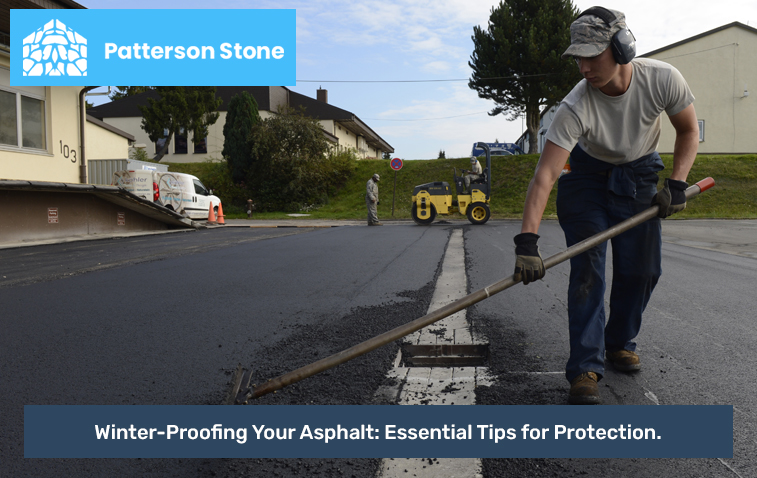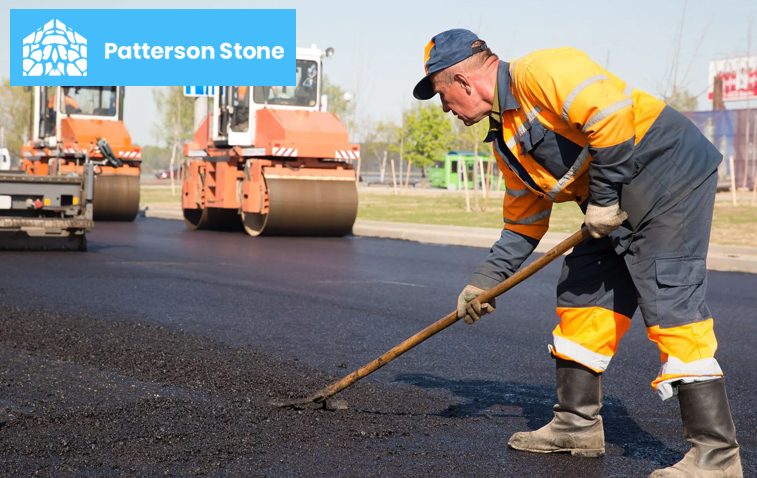Winter-Proofing Your Asphalt: Essential Tips for Protection
The winter season brings cold winds and snowfall, which affect our lives as well as the exterior of our home. Indoors, we maintain warmth with heaters and other means, but the outside, especially asphalt roads and driveways, cannot escape the effects of winter. The cold can weaken the asphalt surface, causing cracks and other problems. Therefore, asphalt care and protection before winter becomes extremely important. This is not only for the beauty of the surface, but also for its long-term strength and safety.
Asphalt surfaces are especially vulnerable in winter when cracks develop. This problem is exacerbated when snow and water accumulate in these cracks and expand. As a result, the cracks widen and begin to erode the surface. Therefore, it is extremely important to fill these cracks and repair the surface in time. This is a simple step, but very effective, to keep the asphalt surface safe.
Applying a seal coating to the asphalt surface before winter is also an important measure. It is a type of protective layer that helps protect the asphalt from snow, water and cold. Seal coating not only strengthens the surface, but it also prevents cracks from growing further. It is an extremely effective way to protect asphalt long-term.
Using the right equipment to remove snow during winter is also important for asphalt protection. Using the wrong equipment can scratch or cause other damage to the asphalt surface. Snow should be removed safely using the right equipment and methods, so that there is no damage to the asphalt surface. By taking some simple but important measures during the winter season, you can ensure the safety of your asphalt. Let’s know how you can protect your asphalt from winter cold and snow and ensure its longevity.

1. Clean the asphalt
The first step to prepare for winter is to deep clean the asphalt surface. Over time, dust, dirt, leaves and other debris build up on asphalt surfaces, which can lead to cracks and other problems. When you clean before winter, it ensures that the surface is clean and problem-free, allowing you to properly perform the next repair or seal coating procedure.
Why is cleaning important?
Cleaning reveals cracks and small imperfections in the asphalt surface, allowing you to fill those cracks in time. Seal coatings also adhere better to a clean surface, which further protects the surface. Additionally, dirt and debris can cause water to collect on the surface, which can freeze and cause further damage during the winter.
- Cracks are visible: Small cracks are easily visible after cleaning.
- Seal coatings are effective: Coatings are more effective on a clean surface.
- Surface is protected: Removing dirt prevents water from collecting on the surface.
2. Fill the cracks
If cracks have appeared on the asphalt surface, it is very important to fill them before winter. Water gets into the cracks and freezes in the cold, which widens them further. This weakens the asphalt surface and can cause major problems. Therefore, filling the cracks on time is essential for the long-term protection of the surface.
Crack Filling Process
Use special asphalt filler or sealant to fill the cracks. Fill it well in the cracks so that water cannot penetrate it. These fillers are easily available in the market and are also simple to use. This asphalt paving repairing process helps in maintaining the strength and prevents further damage.
- Fill cracks: Fill the cracks with asphalt filler so that they do not grow.
- Strengthen the surface: Make the surface stronger by filling the cracks.
- Hurry up: Fill the cracks on time.
3. Apply seal coating
Applying seal coating is an important step in protecting asphalt. It forms a protective layer on the asphalt surface, which protects the surface from water, ice and the harshness of winter. Applying seal coating also reduces the chances of cracks and scratches on the surface.
How does seal coating help?
Seal coating is a type of waterproof layer that prevents water from penetrating inside the asphalt. It gives strength to the surface and protects it from expansion and contraction caused by ice. Applying seal coating protects the asphalt surface for a longer period of time in winter.
- Surface remains protected: Seal coating protects the asphalt from cold and water.
- Cracks do not grow: Seal coating prevents cracks from growing further.
- Longevity: Seal coating helps in increasing the life of asphalt.
4. Use the right snow removal equipment
It is very important to use the right equipment for snow removal in winter. Many times people use metal shovels, which can scratch or damage the asphalt surface. Instead, use plastic or rubber shovels, which help remove snow without damaging the asphalt surface.
Right selection of tools
Using plastic or rubber shovels ensures surface safety. Using these soft tools instead of metal ones is safer and more effective. Also, by using snow melting chemicals correctly, you can further protect the surface.
- Protect the surface from damage: Protect the surface by using the right tools.
- Soft tools: Use soft shovels instead of metal ones.
- Surface safe: The surface is protected with the right tools.
5. Do regular inspections during winter
It is very important to do regular inspections of the asphalt surface during winter. This will allow you to detect small cracks or scratches in time and fix them before they grow. Winter cold can cause even small cracks to become larger, so regular inspections can help you avoid further problems.
Why is inspection necessary?
Winter snow and cold can cause cracks and scratches on the asphalt surface. Regular inspections allow you to detect and fix these problems in time. This ensures that the asphalt surface remains safe during the winter season.
- Inspect on time: Regular inspections detect problems.
- Prevent problems: Fix small problems in time.
- Keep the surface safe: Regular inspections keep the asphalt surface safe.
It is extremely important to keep the asphalt surface safe during the winter season. Cleaning, filling cracks, applying seal coating, using the right equipment and regular inspections – all these steps ensure the long-term safety of the asphalt. If you follow these tips, your asphalt will not only be safe in winter, but will also remain durable and strong for many years to come.
FAQs
Cleaning removes dirt and debris from the asphalt surface, which reveals cracks and allows the seal coating to adhere better. This helps protect the surface.
Yes, cracks can increase in winter due to cold and snow. Water in the cracks freezes and widens them, weakening the asphalt surface.
Seal coating should be applied once every few years, preferably before winter. It helps protect the asphalt from water, ice, and other elements.
Plastic or rubber shovels are best used for snow removal, as they do not scratch or damage the asphalt surface.

